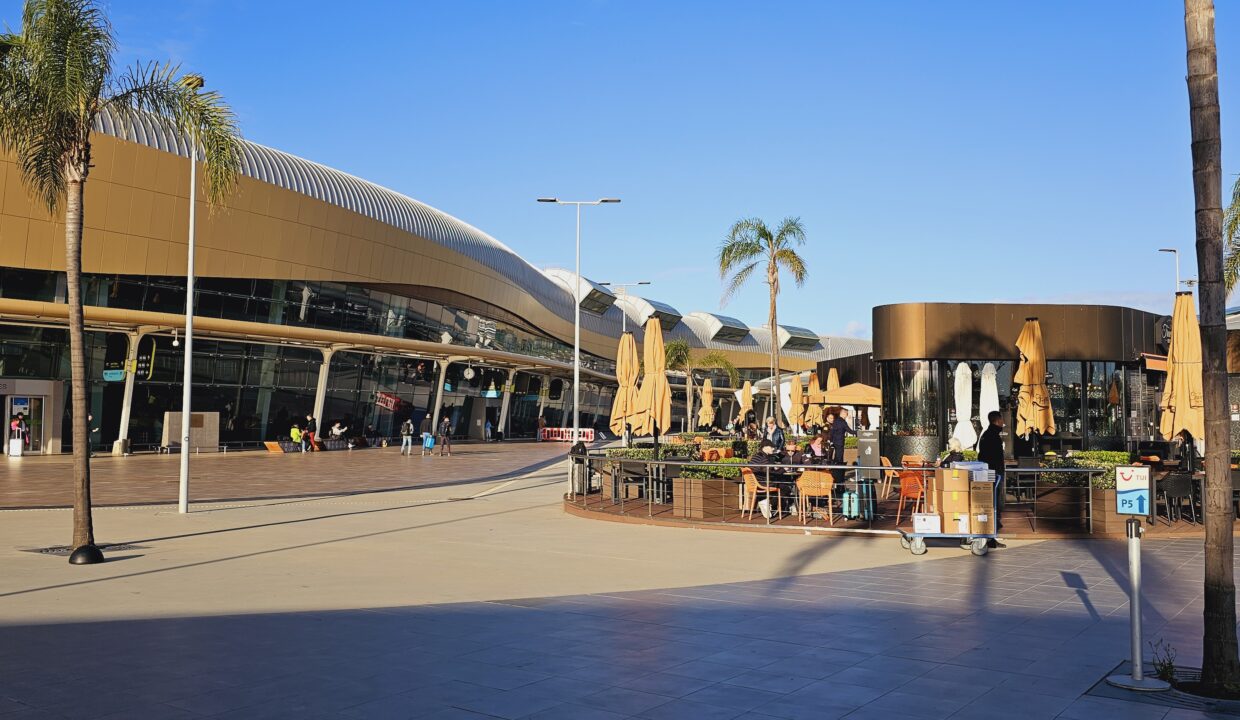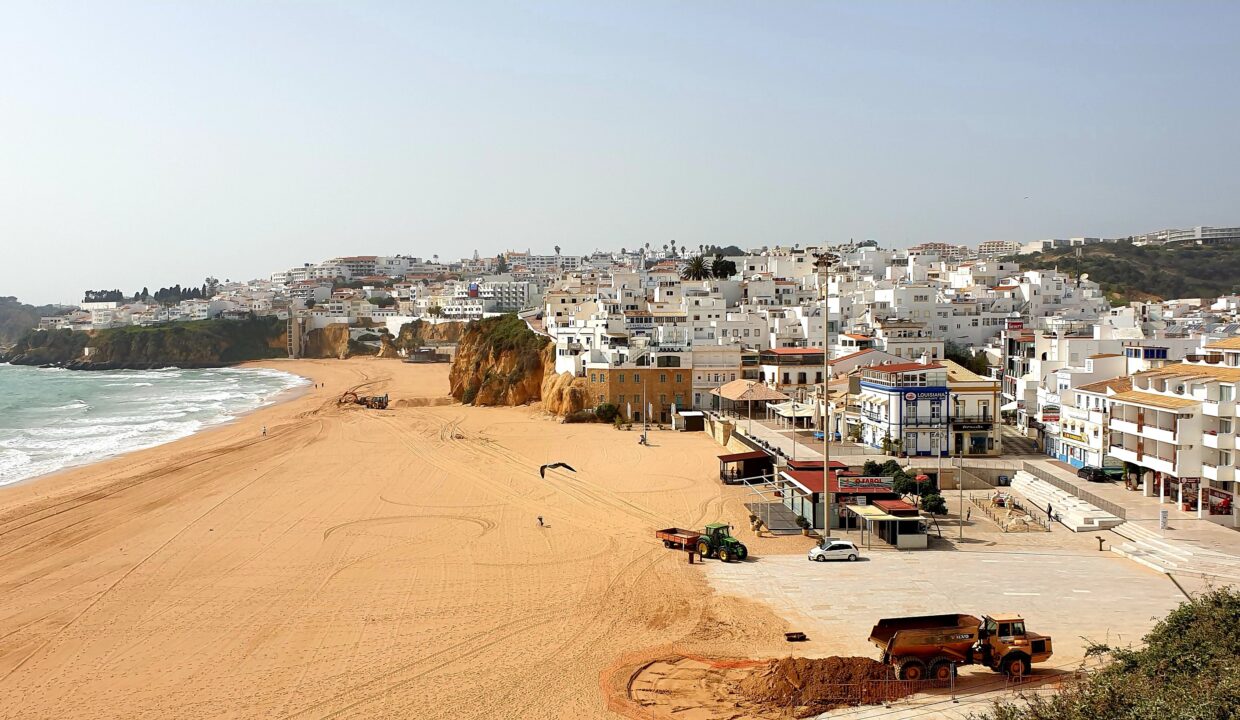Buying Algarve Farms or Quintas – How to Generate a Profitable Income
Making a Passive Income from Farms or Quintas in The Algarve
Introduction
Many of us dream about retiring to the Algarve, and for lots of people, a farm or Quinta brings the idea of a tranquil lifestyle far away from the madding crowds and tourist destinations. This article examines one opportunity to self-sustain without too much outlay or work.
Growing Carob or Alfarroba trees to make money from your Farm or Quinta in the Algarve can be viable and rewarding. The Algarve region in Portugal has a favourable climate for carob tree cultivation, making it a suitable location for this type of farming.
Important considerations and guidelines for growing carob trees in the Algarve
Climate: Carob trees thrive in Mediterranean climates, characterised by hot, dry summers and mild, rainy winters. The Algarve’s climate fits these criteria well, with long, warm summers and relatively mild winters.
Soil requirements: Carob trees are adaptable to various soil types but prefer well-drained soils with a pH range of 6.0 to 8.0. Conduct soil tests to ensure the ground is suitable for carob tree cultivation. If necessary, amend the soil with organic matter or other appropriate amendments to improve its structure and fertility.
Site selection: Choose a sunny location for planting carob trees. They require total sun exposure to maximise their growth and fruit production. Additionally, consider wind protection, as strong winds can negatively affect tree health and fruit set.
Planting: Plant carob trees in the late winter or early spring when the soil is moist, and temperatures are mild. Dig a hole slightly larger than the tree’s root ball, ensuring the bud or graft union is above the soil level. Backfill the hole with soil, firmly compacting it around the roots. Provide support for young trees until they become established.
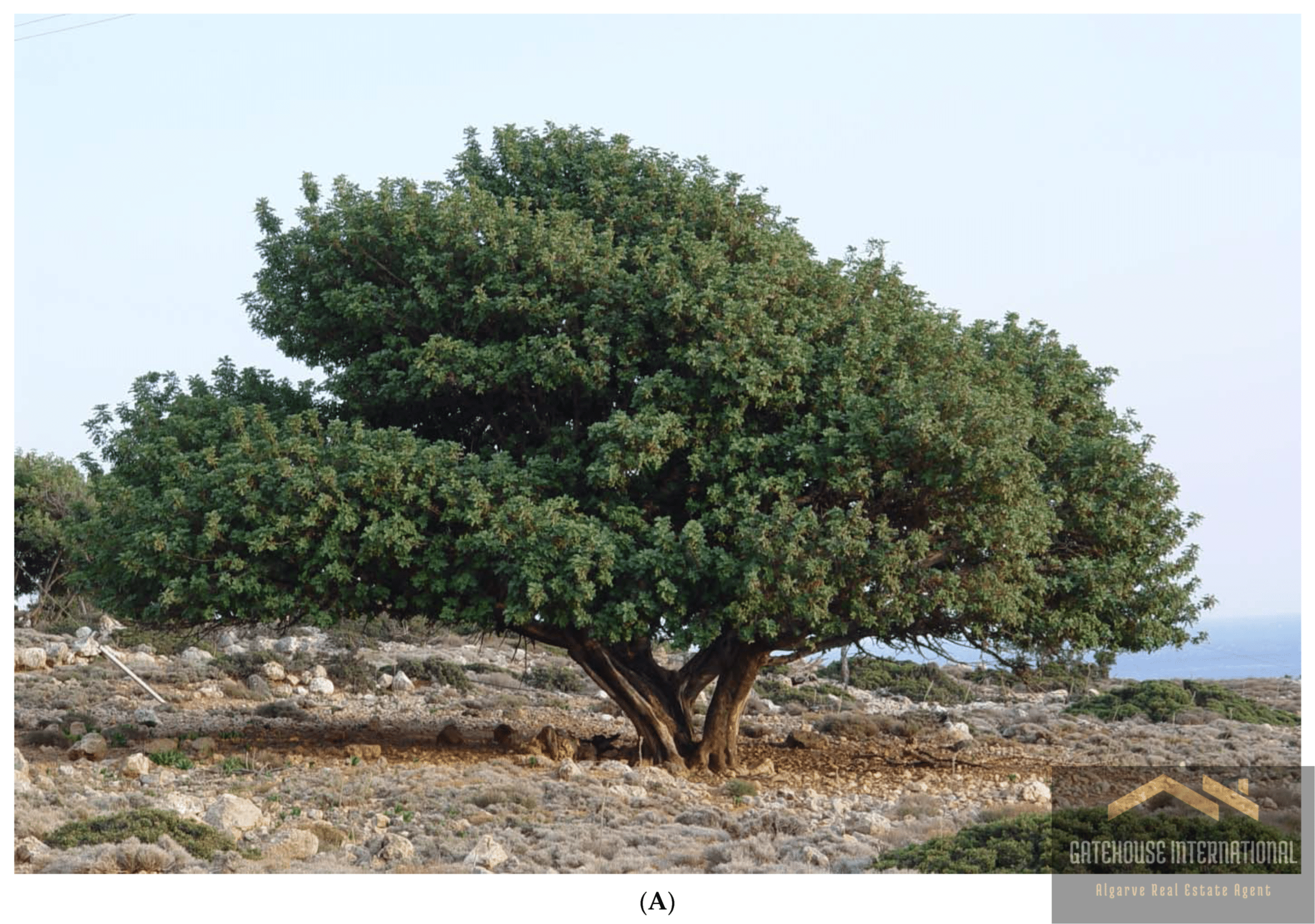
Carob or alfarroba tree on Algarve Farm
Watering: While carob trees are drought-tolerant once established, proper irrigation during the early years is crucial for their growth and establishment. Water the trees deeply and regularly, especially during dry periods. Gradually reduce irrigation frequency as the trees mature.
Pruning: Prune carob trees during the dormant season (late winter or early spring) to maintain their shape, remove dead or diseased branches, and promote air circulation. Pruning also helps manage the tree’s size for easier harvesting and maintenance.
Fertilisation: Carob trees generally do not require heavy fertilisation. However, a balanced fertiliser application in early spring can benefit young trees. Conduct soil tests to determine if any specific nutrient deficiencies must be addressed.
Pest and disease management: Carob trees are relatively resistant to pests and diseases. However, monitor the trees regularly for common issues such as aphids, scale insects, or fungal infections. Integrated pest management practices, including cultural and biological controls, can help manage these problems effectively.
Harvesting: Carob pods typically ripen in late summer or early autumn, around September to November. Harvest the pods when they turn dark brown and become slightly dry. Pods can be collected by hand or using mechanical methods such as shaking the tree or using harvesters designed for carob fruit.
Marketing and utilisation: Carob pods have various uses, such as food ingredients, livestock feed, or processing into carob powder. Research local markets and potential buyers to determine the most suitable need for your carob harvest.
Contact local agricultural experts or horticulturists for advice tailored to the Algarve region’s conditions. They can further guide cultivar selection, pest management, and other aspects of carob tree farming in your area.
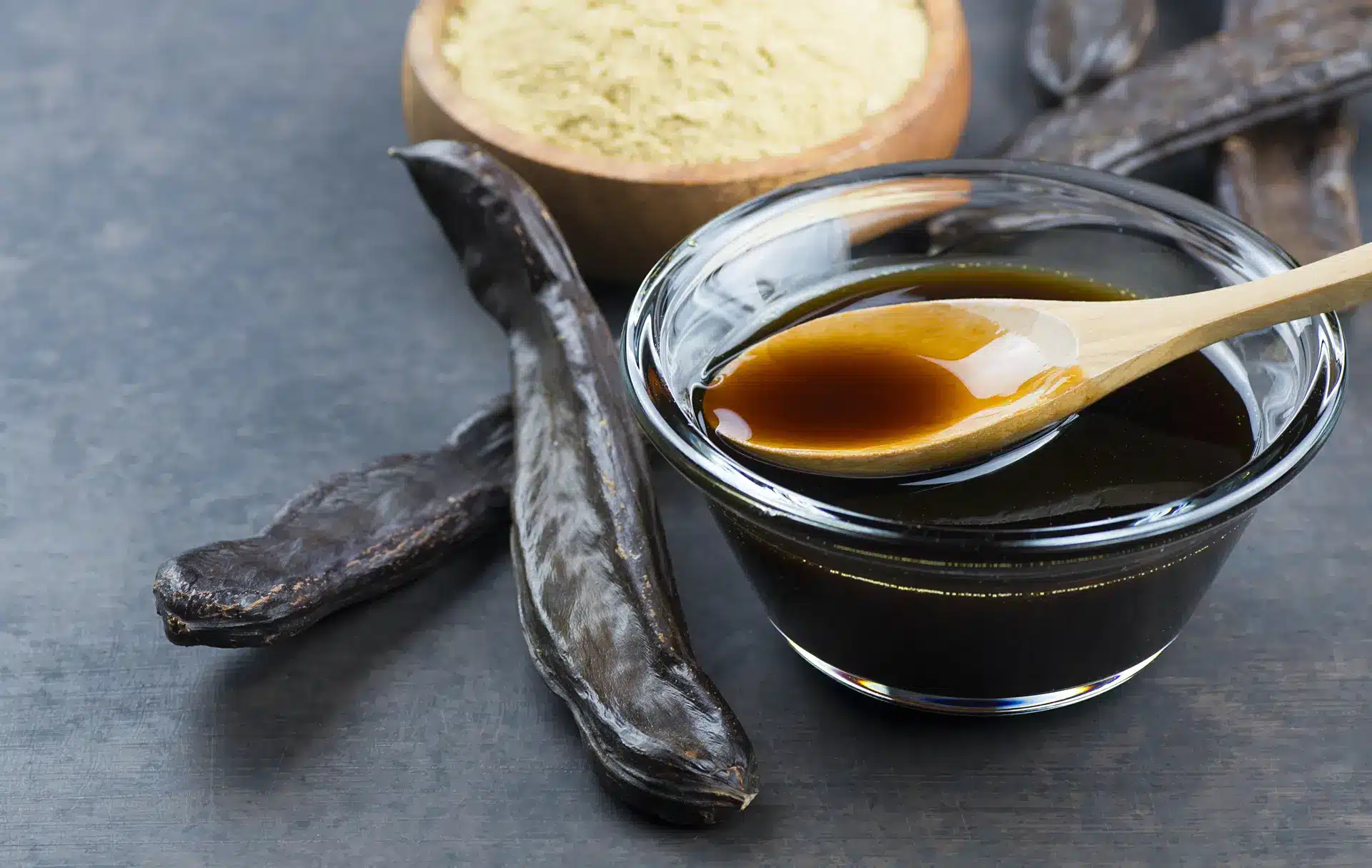
Algarve Quinta-style homemade products
Growing carob trees for farming in the Algarve can be profitable
But it is essential to research and plan carefully.
As we have said, the Algarve is an excellent place to grow carob trees because the climate is warm and dry. Carob trees are also relatively drought-tolerant, which can benefit the Algarve, where rainfall is often limited.
The profitability of growing carob trees will depend on several factors, including the cost of land, the cost of planting and caring for the trees, and the price of carob products.
The land cost in the Algarve can be high, but there are some areas where land cost is more affordable. The cost of planting and caring for carob trees is also relatively low. Carob product prices have increased recently, which is a positive sign for farmers.
If you are considering growing carob trees for farming in the Algarve, it is essential to do your research and plan carefully. There are several resources available to help you get started, including the following:
The Ministry of Agriculture and Rural Development (Ministério da Agricultura e Desenvolvimento Rural)
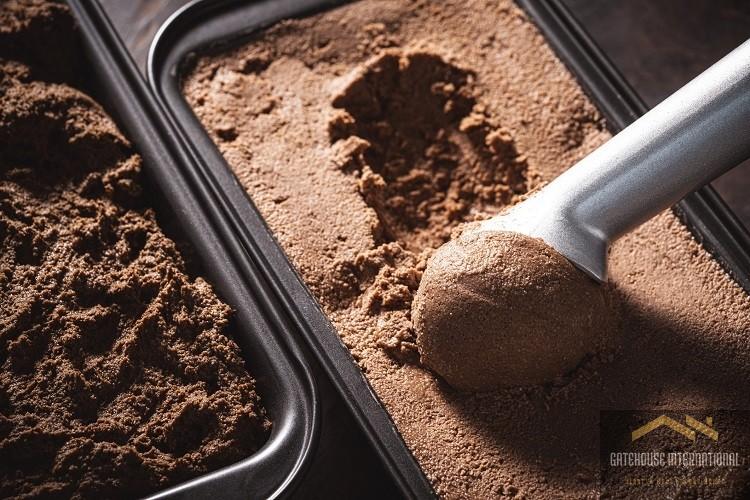
Uses of Carob Fruit Algarve
The carob fruit has a variety of uses
Food: Carob powder is a popular substitute for cocoa powder in baking and beverages. It has a similar flavour to chocolate but is lower in fat and sugar. Carob chips can also be used in baking and snacking.
Animal feed: Carob pods are a valuable source of nutrition for livestock, particularly ruminants. They can be included in animal feed to provide energy, fibre, and essential minerals. Carob pods are often used for cattle, goats, and sheep in the feed industry.
Medicinal: Carob has been used medicinally for centuries to treat various conditions, including diarrhoea, constipation, and heartburn. It is also a good source of antioxidants and minerals.
Cosmetics: Carob extract is used in cosmetics such as lotions and soaps. It is a natural moisturiser and has anti-inflammatory properties.
Industrial applications: Carob seeds are rich in polysaccharides with thickening and stabilising properties. These properties make carob seed gum (locust bean gum) a valuable ingredient in the food industry, especially in producing sauces, dressings, and dairy products.
Some specific examples of how carob can be used
In baking: Carob powder can make cakes, cookies, brownies, and other desserts. It can also make hot chocolate, smoothies, and other beverages.
As a snack: Carob chips can be eaten as a healthy snack or added to trail mix.
As a natural sweetener: Carob fruit contains natural sugars, making it a potential source of sweeteners. Carob syrup or molasses can be produced by boiling the pods and extracting the liquid. Carob syrup can be a natural sweetener in desserts, beverages, and other food preparations.
Carob is a versatile and nutritious food that can be used in various ways. It is a good choice for people looking for a healthy alternative to chocolate or cocoa.
It’s important to note that while carob is often used as a chocolate substitute, its taste is distinct and not identical to chocolate. However, carob does offer its unique flavour profile and nutritional benefits, making it a popular ingredient in various products.
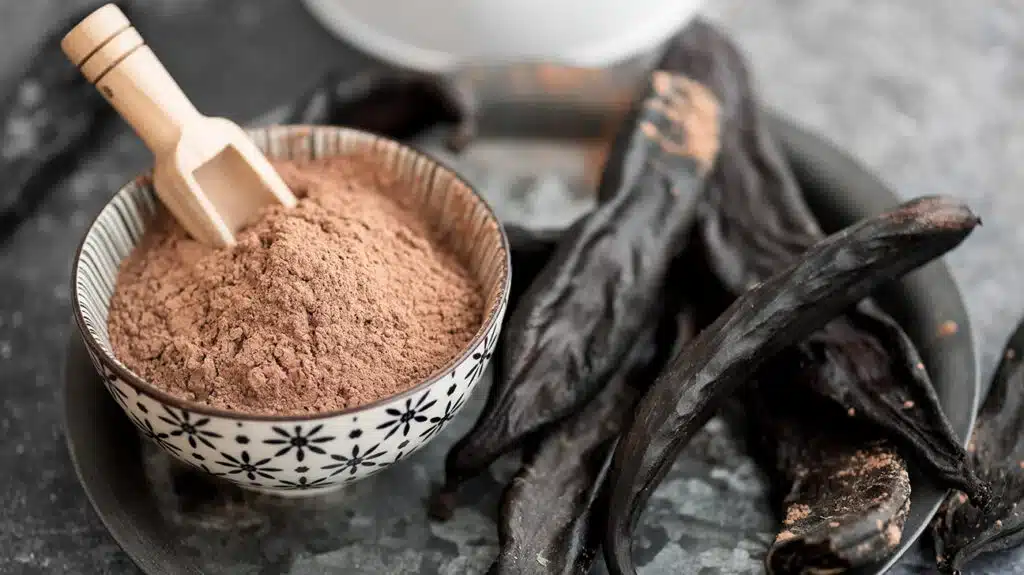
Buying Algarve Farms or Quintas
Beware of the Dangers – Algarve Farm & Quinta Fires
Carob fruits can cause fires in hot conditions. The carob tree pods are high in sugar and can easily catch fire if exposed to a spark or flame. In addition, the pods are often left on the ground after they fall from the tree, which can create a fire hazard. For this reason, it is essential to remove carob pods from the ground and dispose of them properly in hot weather.
Here are some tips for preventing carob fires:
- Remove carob pods from the ground and dispose of them properly.
- Avoid smoking near carob trees.
- Be careful with open flames near carob trees.
- Keep carob trees well-watered to reduce the risk of fire.
- Be aware of the fire danger in your area and take precautions accordingly.
By following these tips, you can help to prevent carob fires and keep your property safe.
Note that the tree is fire-resistant and used in many locations as a fire barrier.
To Recap & Conclude
With careful planning and execution, growing carob trees for farming in the Algarve can be profitable.
Here are the main points for the successful growing of carob trees in the Algarve:
- Choose a sunny location with well-drained soil.
- Plant the trees in the fall or early spring.
- Water the trees regularly, especially during the first year.
- Fertilise the trees every year.
- Prune the trees regularly to maintain good shape.
- Protect the trees from pests and diseases.
With proper care, carob trees can produce fruit for many years.
If you dream of getting away from the hustle and bustle of city living and retiring to a Farm or Quinta in the Algarve. Why not browse our varied selection of properties for sale in the region?
Should you require any advice or further information about the purchase of Farms or Quintas in the Algarve, please do not hesitate to contact us here at Gatehouse International, where someone is always on hand to give advice or answer any questions.
If you found this post interesting, why not read or related post about growing olive trees on Algarve Farms and Quintas.

Mark McLoughlin: A Passionate Explorer of Algarve’s Rich Heritage
For over 20 years, Mark has called the Algarve home, immersing himself in its landscapes, culture, and history. His passion lies in sharing the region’s stories through writing, photography, and guides for those who live here or dream of making the Algarve their home.
As a Level 10 Google Local Guide, Mark has contributed extensively to showcasing the Algarve’s hidden beaches, historic towns, and local gems, helping both residents and visitors discover the best of this southern paradise.
🔗 mark-mcloughlin.com




